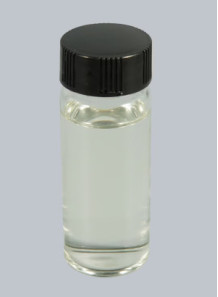Chlorhexidine Gluconate (20% Solution)
- Product Code: 126201
widely used in personal care and cosmetics due to its effective antimicrobial and preservative properties
- -
- -
- -
- -
- -
- -
- -
- -
- -
- -
- -
- -
- -
- -
- -
- -
- -
- -
| Test Name | Specification |
|---|---|
| Characteristics | This product is a colorless to light yellow almost clear slightly viscous liquid; Odorless or almost odorless. |
| Characteristics (solubility) | This product is miscible with water and soluble in ethanol or propanol. |
| Relative Density | Should be 1.060-1.070 |
| Identify 1 | Comply with positive reaction |
| Identify 2 | Comply with positive reaction |
| Identify 3 | Comply with positive reaction |
| Acidity | The pH value should be 5.5-7.0 |
| Parachloroaniline | Complies |
| Related Substance | Complies |
| Residue on Ignition | Not exceeding 0.1% |
| Content | Should be 19.0%-21.0% (g/ml) |
Chlorhexidine Gluconate (20% solution) is widely used in personal care and cosmetics due to its effective antimicrobial and preservative properties. Below are some applications and considerations for its usage:
Applications:
-
Oral Care Products:
- Used in mouthwashes, toothpaste, and oral rinses for reducing plaque, gingivitis, and oral bacteria.
- Acts as an antimicrobial agent to maintain oral hygiene.
-
Skin Care Products:
- Incorporated into cleansers, toners, and gels for acne-prone skin to reduce bacterial growth.
- Commonly used in hand sanitizers and antiseptic hand washes to combat germs and infections.
-
Hair Care:
- Found in medicated shampoos to address dandruff or scalp infections caused by bacteria or fungi.
-
Cosmetic Preservative:
- Used as a preservative in formulations to enhance product shelf life by preventing microbial contamination.
-
Feminine Hygiene:
- Added to intimate washes and wipes to reduce odor and maintain hygiene.
-
Post-Treatment Care:
- Applied in post-procedure skin products, such as after chemical peels, laser treatments, or microdermabrasion, for its antimicrobial properties to prevent infections.
-
Wound and Scar Care:
- Used in gels or sprays designed for wound cleansing and reducing the risk of infection.
Formulation Considerations:
-
Concentration:
- Typically used at lower concentrations (0.1%–4%) depending on the product type to balance efficacy with skin compatibility.
-
pH Sensitivity:
- Stable in a pH range of 5–8, making it suitable for most cosmetic formulations.
-
Compatibility:
- Can be inactivated by anionic surfactants or soaps, so it's often paired with non-ionic or cationic ingredients.
Key Benefits:
- Broad-spectrum antimicrobial activity against gram-positive and gram-negative bacteria.
- Enhances product safety by reducing microbial contamination.
- Long-lasting activity on skin and surfaces.
Use: used in antiseptic formulations.
How to mix: final mix The temperature of cosmetics must be below 40 °C
Utilization rate: 0.1-0.3%
Product characteristics: clear to light yellow liquid
Dissolution : miscible with water and soluble in ethanol or propanol
Storage: For long-term storage store at room temperature Avoid heat, humidity and sunlight. At least 24 months of shelf life.
INCI Name : Aqua, Chlorhexidine digluconate
Be the first to review this product :-)
Recommend Lab-Service
| Lab Service | Price |
|---|
widely used in personal care and cosmetics due to its effective antimicrobial and preservative properties
Chlorhexidine Gluconate (20% solution) is widely used in personal care and cosmetics due to its effective antimicrobial and preservative properties. Below are some applications and considerations for its usage:
Applications:
-
Oral Care Products:
- Used in mouthwashes, toothpaste, and oral rinses for reducing plaque, gingivitis, and oral bacteria.
- Acts as an antimicrobial agent to maintain oral hygiene.
-
Skin Care Products:
- Incorporated into cleansers, toners, and gels for acne-prone skin to reduce bacterial growth.
- Commonly used in hand sanitizers and antiseptic hand washes to combat germs and infections.
-
Hair Care:
- Found in medicated shampoos to address dandruff or scalp infections caused by bacteria or fungi.
-
Cosmetic Preservative:
- Used as a preservative in formulations to enhance product shelf life by preventing microbial contamination.
-
Feminine Hygiene:
- Added to intimate washes and wipes to reduce odor and maintain hygiene.
-
Post-Treatment Care:
- Applied in post-procedure skin products, such as after chemical peels, laser treatments, or microdermabrasion, for its antimicrobial properties to prevent infections.
-
Wound and Scar Care:
- Used in gels or sprays designed for wound cleansing and reducing the risk of infection.
Formulation Considerations:
-
Concentration:
- Typically used at lower concentrations (0.1%–4%) depending on the product type to balance efficacy with skin compatibility.
-
pH Sensitivity:
- Stable in a pH range of 5–8, making it suitable for most cosmetic formulations.
-
Compatibility:
- Can be inactivated by anionic surfactants or soaps, so it's often paired with non-ionic or cationic ingredients.
Key Benefits:
- Broad-spectrum antimicrobial activity against gram-positive and gram-negative bacteria.
- Enhances product safety by reducing microbial contamination.
- Long-lasting activity on skin and surfaces.
Use: used in antiseptic formulations.
How to mix: final mix The temperature of cosmetics must be below 40 °C
Utilization rate: 0.1-0.3%
Product characteristics: clear to light yellow liquid
Dissolution : miscible with water and soluble in ethanol or propanol
Storage: For long-term storage store at room temperature Avoid heat, humidity and sunlight. At least 24 months of shelf life.
INCI Name : Aqua, Chlorhexidine digluconate
| Mechanism | - |
| Appearance | - |
| Longevity | - |
| Strength | - |
| Storage | - |
| Shelf Life | - |
| Allergen(s) | - |
| Dosage (Range) | - |
| Recommended Dosage | - |
| Dosage (Per Day) | - |
| Recommended Dosage (Per Day) | - |
| Mix Method | - |
| Heat Resistance | - |
| Stable in pH range | - |
| Solubility | - |
| Product Types | - |
| INCI | - |
Cart
No products



